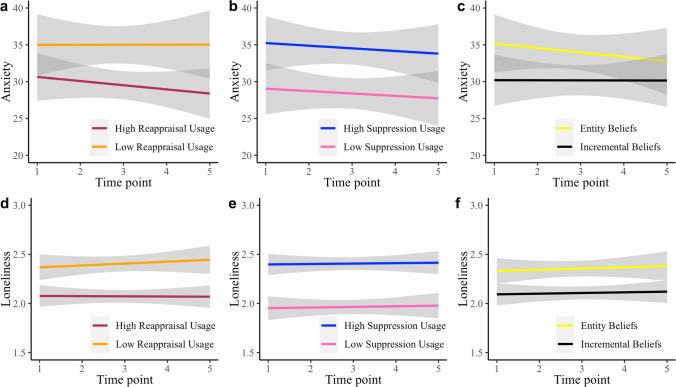Emotion Regulation Strategies and Beliefs About Emotions Predict Psychosocial Outcomes in Response to Multiple Stressors
Abstract
Emotion regulation (ER) strategies and beliefs about emotions (implicit theories of emotions; ITE) may shape psychosocial outcomes during turbulent times, including the transition to adulthood and college while encountering stressors. The normative stressors associated with these transitions were compounded by the COVID-19 pandemic, providing a novel opportunity to examine how emerging adults (EAs) cope with sustained stressors. Stress exposures can heighten existing individual differences and serve as “turning points” that predict psychosocial trajectories. This pre-registered study (https://osf.io/k8mes) of 101 EAs (18–19 years old) examined whether ITE (believing emotions can change or not; incremental vs. entity beliefs) and ER strategy usage (cognitive reappraisal and expressive suppression usage) predicted changes in anxiety symptomatology and feelings of loneliness across five longitudinal assessments (across a 6-month period) before and during the initial months of the COVID-19 pandemic. On average, EAs’ anxiety decreased after the pandemic outbreak but returned to baseline over time, while loneliness remained relatively unchanged across time. ITE explained variance in anxiety across time over and above reappraisal use. Conversely, reappraisal use explained variance in loneliness over and above ITE. For both anxiety and loneliness, suppression use resulted in maladaptive psychosocial outcomes across time. Thus, interventions that target ER strategies and ITE may ameliorate risk and promote resilience in EAs who experience increased instability.



 求助内容:
求助内容: 应助结果提醒方式:
应助结果提醒方式:


